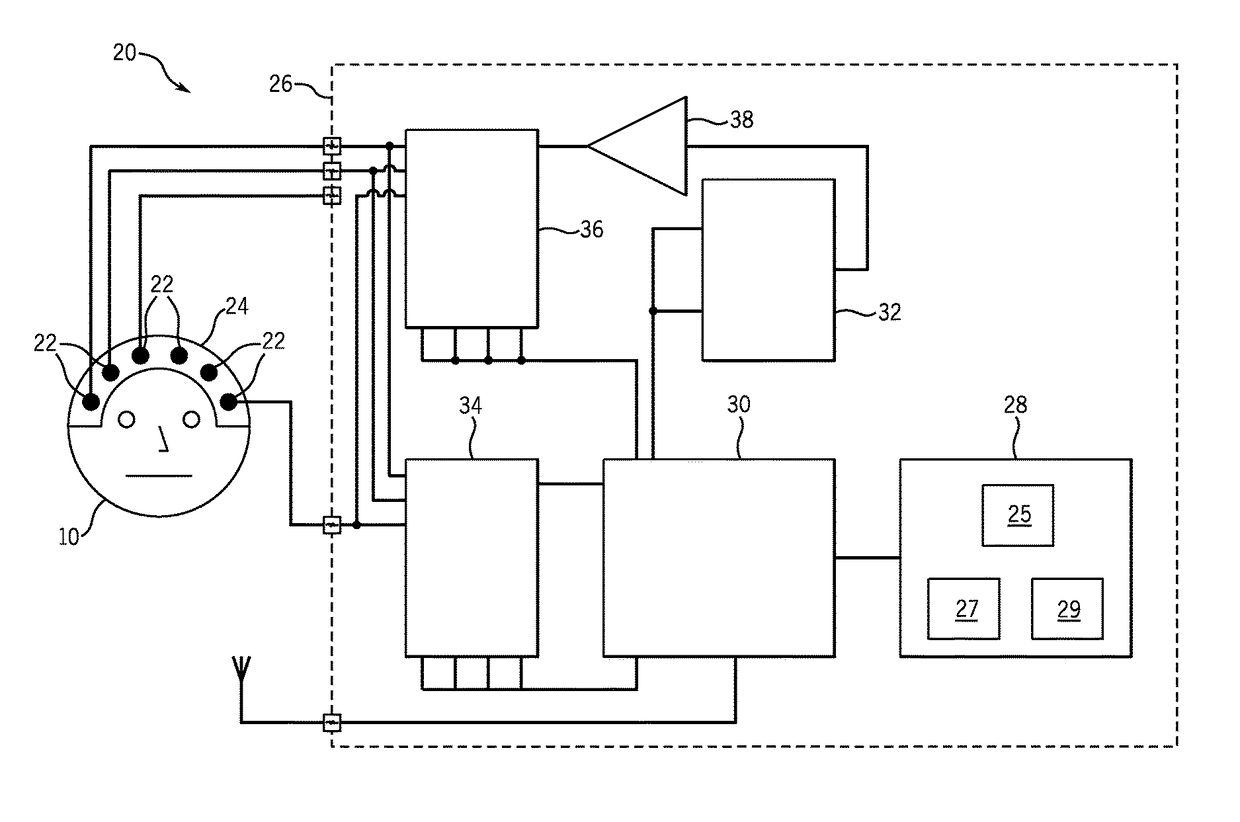System and method for electrical impedance spectroscopy
a technology system and method, applied in the field of system and method can solve the problems of limited availability of ambulance, brain injury, intracranial hemorrhage, etc., and achieve the effects of improving the accuracy of electrical impedance spectroscopy, sensitively assessing the impedance of deep brain tissue, and reducing the risk of brain injury
- Summary
- Abstract
- Description
- Claims
- Application Information
AI Technical Summary
Benefits of technology
Problems solved by technology
Method used
Image
Examples
Embodiment Construction
[0043]The present invention provides systems and methods that include an improvement of electrical impedance spectroscopy (EIS) that employs the Stochastic Gabor Function (SGF) as an EIS stimulus current shape. More specifically, the SGF is an excitation waveform that, in the present case, creates excitation pulses during EIS of the brain. The SGF is a uniformly distributed noise, modulated by a Gaussian envelop, with a wide frequency spectrum representation regardless of the stimuli energy, and is least compact in the sample frequency phase plane. The SGF facilitate both shallow and deeper tissue penetration, a capability that not is achieved with conventional stimulus paradigms. In addition, as further described below, an advantage of SGF pulse delivery is the potential for “dual energy” subtraction imaging that can more sensitively assess deep brain tissue impedance than current single pulse paradigms.
[0044]EIS is maximally sensitive to impedance changes at the electrode-skin int...
PUM
 Login to View More
Login to View More Abstract
Description
Claims
Application Information
 Login to View More
Login to View More - R&D
- Intellectual Property
- Life Sciences
- Materials
- Tech Scout
- Unparalleled Data Quality
- Higher Quality Content
- 60% Fewer Hallucinations
Browse by: Latest US Patents, China's latest patents, Technical Efficacy Thesaurus, Application Domain, Technology Topic, Popular Technical Reports.
© 2025 PatSnap. All rights reserved.Legal|Privacy policy|Modern Slavery Act Transparency Statement|Sitemap|About US| Contact US: help@patsnap.com



